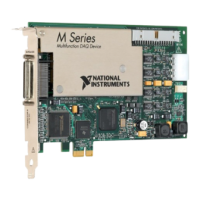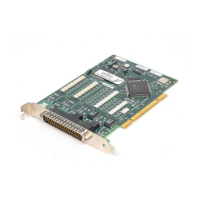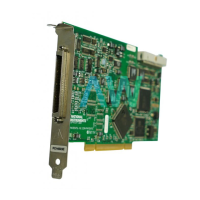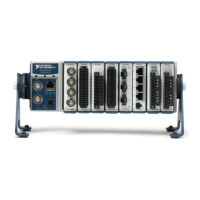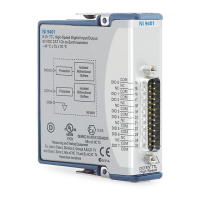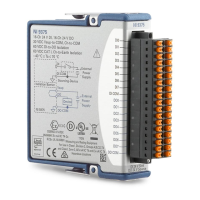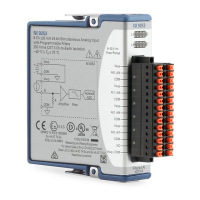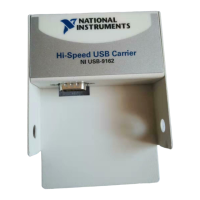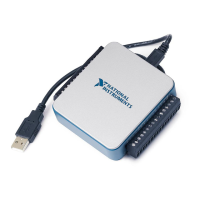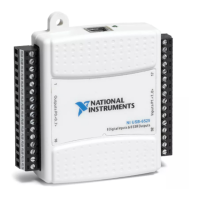5-4 | ni.com
Chapter 5 Analog Output
One property of buffered I/O operations is the sample mode. The sample mode can be either
finite or continuous:
– Finite sample mode generation refers to the generation of a specific, predetermined
number of data samples. Once the specified number of samples has been written out,
the generation stops.
– Continuous generation refers to the generation of an unspecified number of samples.
Instead of generating a set number of data samples and stopping, a continuous
generation continues until you stop the operation. There are several different methods
of continuous generation that control what data is written. These methods are
regeneration, FIFO regeneration and non-regeneration modes:
• Regeneration is the repetition of the data that is already in the buffer. Standard
regeneration is when data from the PC buffer is continually downloaded to the
FIFO to be written out. New data can be written to the PC buffer at any time
without disrupting the output. Use the NI-DAQmx write property RegenMode to
allow (or not allow) regeneration. The NI-DAQmx default is to allow
regeneration.
• With FIFO regeneration, the entire buffer is downloaded to the FIFO and
regenerated from there. Once the data is downloaded, new data cannot be written
to the FIFO. To use FIFO regeneration, the entire buffer must fit within the FIFO
size. The advantage of using FIFO regeneration is that it does not require
communication with the main host memory once the operation is started, thereby
preventing any problems that may occur due to excessive bus traffic. Use the
NI-DAQmx AO channel property, UseOnlyOnBoardMemory to enable or
disable FIFO regeneration.
• With non-regeneration, old data is not repeated. New data must be continually
written to the buffer. If the program does not write new data to the buffer at a fast
enough rate to keep up with the generation, the buffer underflows and causes an
error.
Analog Output Triggering
Analog output supports two different triggering actions:
• Start trigger
• Pause trigger
An analog or digital trigger can initiate these actions. All X Series devices support digital
triggering, but some do not support analog triggering. To find your device’s triggering options,
refer to the device specifications. Refer to the
AO Start Trigger Signal and AO Pause Trigger
Signal
sections for more information about these triggering actions.
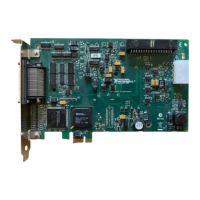
